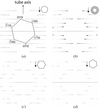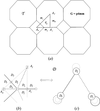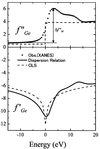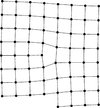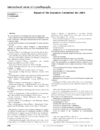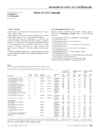issue contents
November 2005 issue

Cover illustration: An experimentally derived plot of the Fermi hole mobility function (FHMF) for urea. The FHMF can be interpreted as a potential energy surface for electron transfer. This plot was obtained from a Hartree-Fock wavefunction constrained to fit measured X-ray diffraction structure factors, using the Tonto program. See Jayatilaka & Grimwood [Acta Cryst. (2004), A60, 111-119].
research papers
 access
access
short communications
international union of crystallography




 journal menu
journal menu









